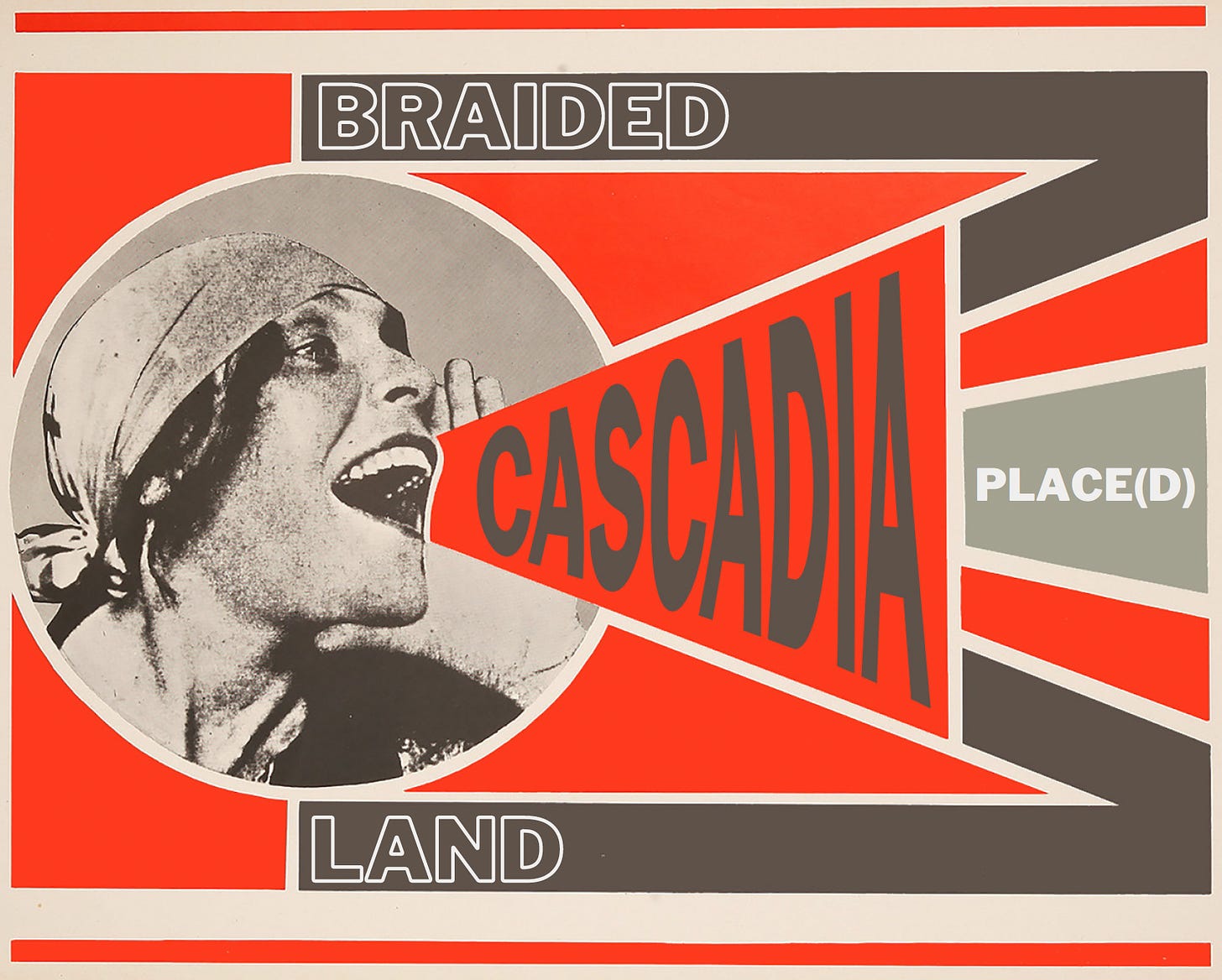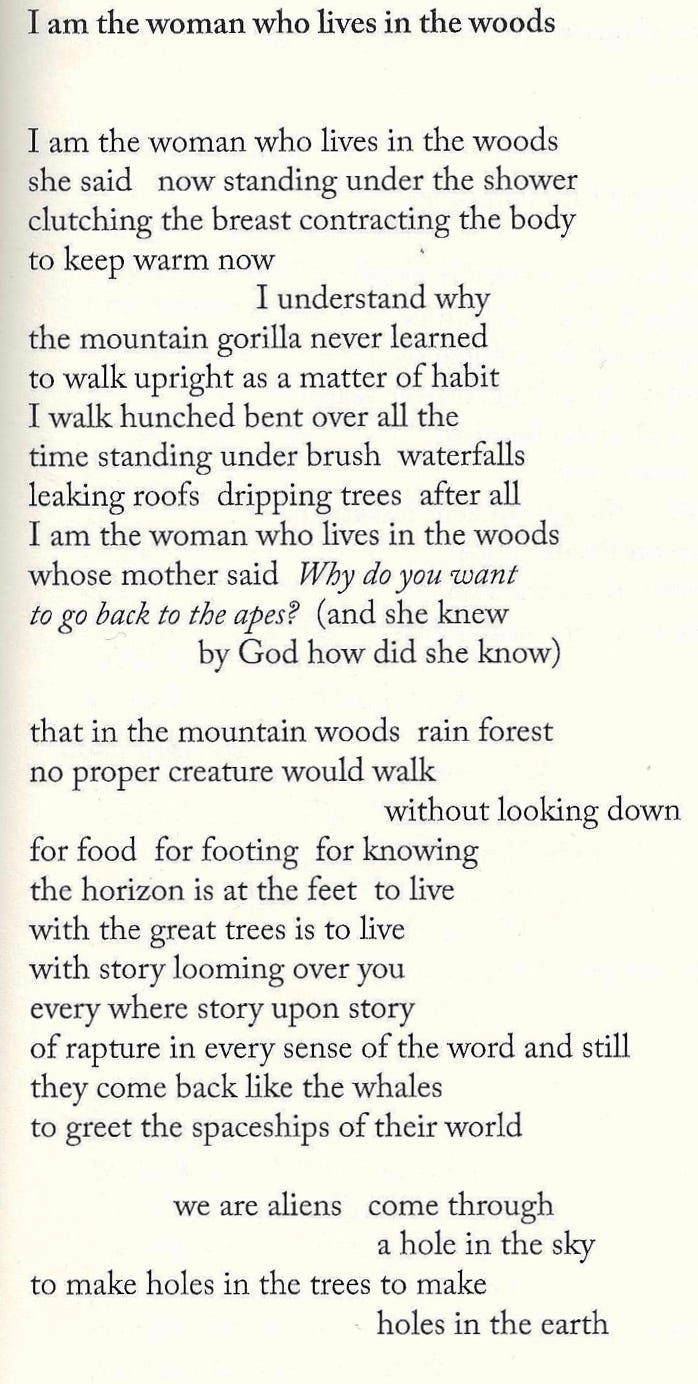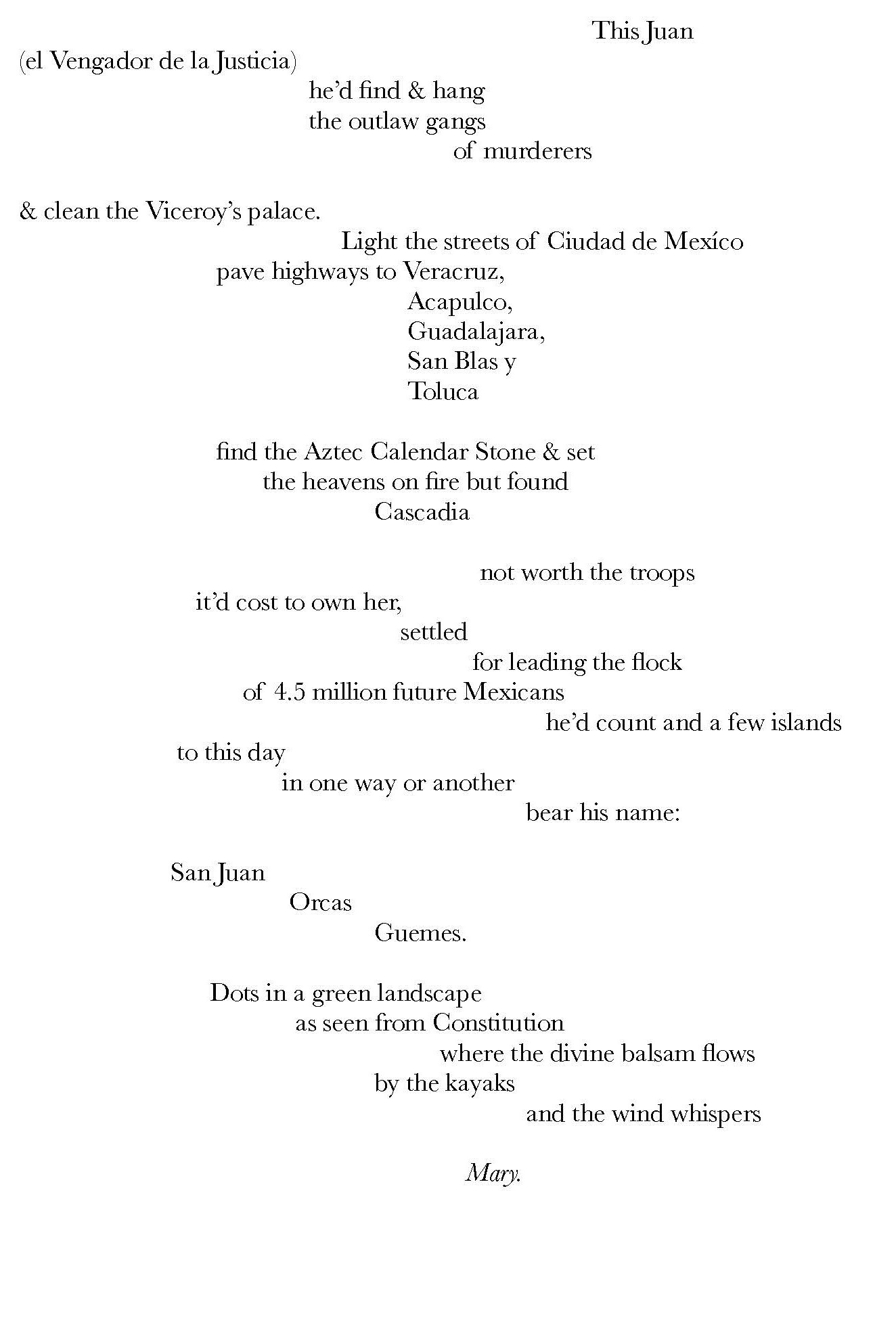I am delighted to participate in Cascadia: A Braided Land, at UBC Okanagan March 1 & 2. This event is the vision of Slava Bart, with assistance from Harold Rhenisch. Here is a description:
I met Slava Bart via Sharon Thesen. Slava is originally from Kazakhstan and lived for 30 years in Israel. He is an excellent poet and speaks at least five languages. He heard about the Cascadia movement in Israel, is interested in “post-national” nation movements and is a grad student at UBCO. On this event, he is working with Harold Rhenisch, a true Cascadian poet, whom I interviewed in December 2024. See: https://cascadiapoeticslab.org/2024/12/interview-with-harold-rhenisch-on-the-salmon-shanties-a-cascadian-song-cycle/
Slava has been an inspired participant in the Poetics as Cosmology workshop that ended two weeks ago.
I was asked to speak about something related to Cascadia and poetry and I am developing some notes on this subject:
Cascadian Mind and the Cascadian Saturation Job
(For Kelowna, BC, March 1 & 2, 2025)
How to allow one’s mind to be more of the place than of the intellect that has abstracted us from what is real and how to take the notion from Charles Olson of a “saturation job” to create a project centered around one event or events in the history of the bioregion and to write about them in a “use of speech at its least careless and least logical” in a way that Brenda Hillman describes as “experimental lyric form.” A note on lineation will be included.
Cascadian Mind
First, one must understand what we mean by “mind” and David Abram in his essay The Air Aware says:
“…mind is not… a human possession, but is rather a property of the… biosphere — a property in which we, along with the other animals and the plants, all participate. The apparent interiority … we ascribe to the mind [has] less to do with the notion… there is a separate mind located inside me, and another, distinct mind that resides inside you, and more to do with a sense that you and I are both situated inside it … that we are bodily immersed in an awareness that is not ours, but is rather the Earth’s.
If a poem is a “high energy construct” as Charles Olson suggested in 1950, and elaborated on 13 years later at the Vancouver Poetry Conference, then how do we translate the energy of a stunning bioregion such as Cascadia, with mountains and volcanoes, fjords and glaciers, islands and deserts, Western Red Cedar, Madrones, old growth forests, grizzly bears and whales, and some of the most unique biodoversity on earth? We get some sense from poets of other bioregions like Lorine Niedecker, and Gary Snyder, who said the short definition of bioregionalism is “stay put, watch what happens.” Niedecker did that in Wisconsin and there’s someone doing it here, I am sure.
One of those poets who stayed put was Mary Norbert Kõrte. She lived in the the same former redwood logging camp the last half of her life. She was a nun for many years in the Dominican order, she got special dispensation to attend the 1965 Berkeley Poetry Conference and famously engaged Jack Spicer, asking him if the labor songs of the 20s & 30s qualified as poetry.
Mary Norbert Kõrte:
Sister Mary with mind embedded in the redwood forest of Willits, California, extreme Southern Cascadia, smell of marijuana assaulting you as you exit your car upon arrival, large herb garden could have been a centerfold in High Times magazine back in the day. Mind embedded in place, as it should be as it was before we abstracted ourselves right out of the very place that sustains us. See Olson, Human Universe:
We have lived long in a generalizing time, at least since 450 B.C. And it has had its effects… Logos, or discourse, for example, in that time, so worked its abstractions into our concept and use of language that language's other function, speech, seems so in need of restoration that several of us go back to hieroglyphs or to ideograms to right the balance. (The distinction here is between language as the act of the instant and language as the act of thought about the instant.)
In 1955, Charles Olson wrote two letters to the young poet Ed Dorn that he then revised as A Bibliography on America for Ed Dorn. At one point, Olson argued:
PRIMARY DOCUMENTS. And to hook on here is a lifetime of assiduity. Best thing to do is to dig one thing or place or man until you yourself know more abt that than is possible to any other man. It doesn’t matter whether it’s Barbed Wire or Pemmican or Paterson or Iowa. But exhaust it. Saturate it. Beat it. And then U KNOW everything else very fast: one saturation job (it might take 14 years). And you’re in, forever.
For me it is not a coincidence that 14 years is about the same amount of time that poets in Ireland are expected to apprentice with a master poet before they rightfully earn the label “poet.”
& before I give a couple of examples of poems from a Cascadian saturation job, a word about lineation.
When interviewing Ed Sanders he said that a multi-decade research project could be done with lineation like the indented, triadic stanzas of William Carlos Williams and if you look at WCW’s work you can see how the poetry is supposed to be read aloud, can sense the rhythm. Olson said that the typewriter gives the poet the tools that musicians have had for the recreation of a particular musical composition. It was just after Ezra Pound’s Pisan Cantos were published that in large part led Olson to thinking that way as Pound composed via his doctor’s typewriter in the medical tent in Pisa. When one composes like people of this particular lineage one’s poetry is a “map or graph of the mind moving.” (Philip Whalen) and as one develops a strong connection between that mind’s movement in language and how it is materialized onto the page, one strengthens the aural imagination let’s call it, the connection to the source of all poetry is deepened, the intuition grows stronger and the editor’s mind more relegated to the proper place in the whole system which (I think) is overrated in much contemporary poetry. Sort of like musicians who can’t play live but “fix it in the studio.” The personal computer gives us a tool to break the tyranny of left-justified poetry lineation, which Joanne Kyger has likened to soldiers in formation and Michael McClure has referred to as “lawnmower poetry.” It has been my experience that when a poet writes projectively, using the page as a score for how the syllables are revealed in one’s “mind ear,” the method deepens the ability to hear that voice and deepens the intuition in general. In this style of lineation space = time and it can be demonstrated in various ways on the page.
Examples from ATBS and Pig War…












